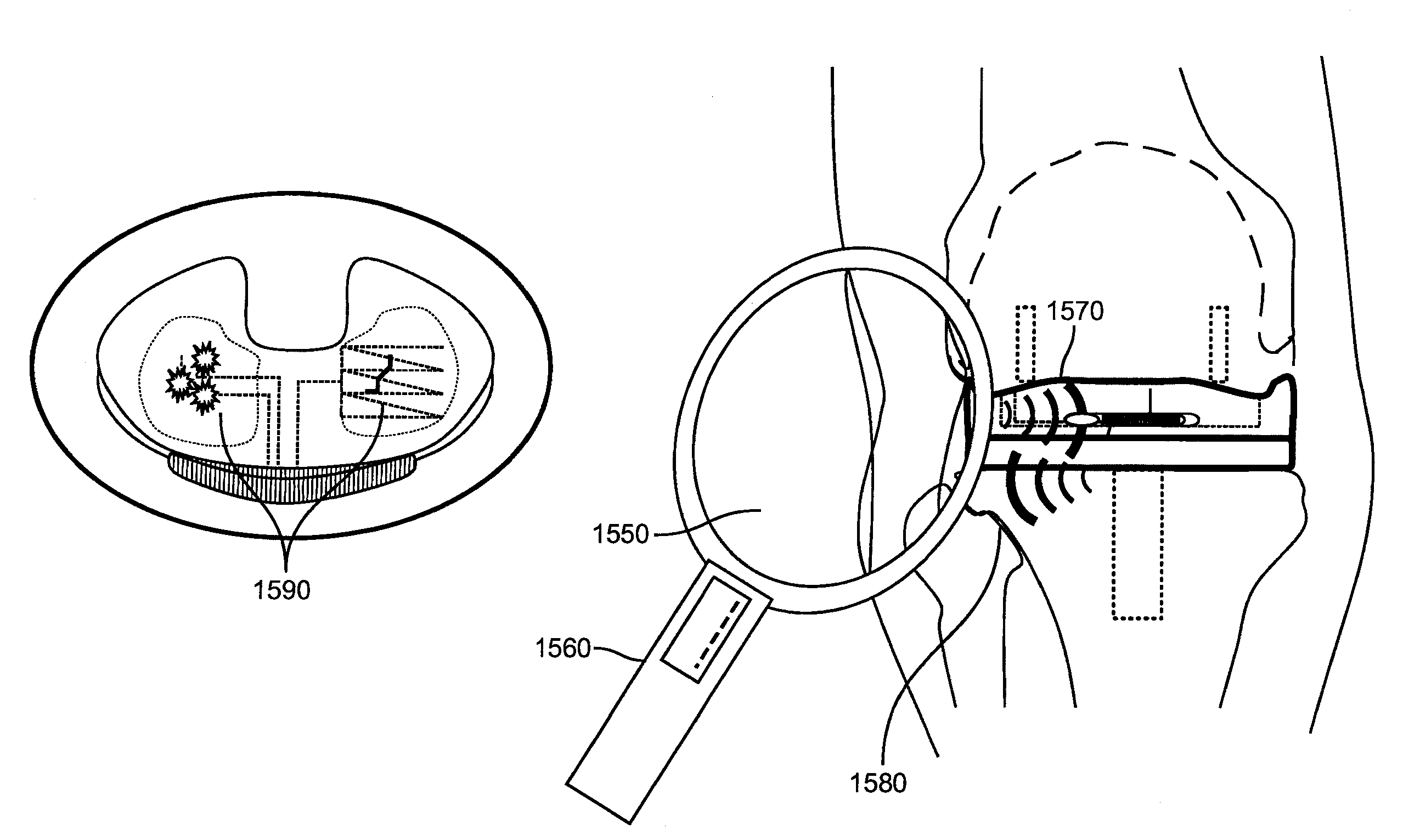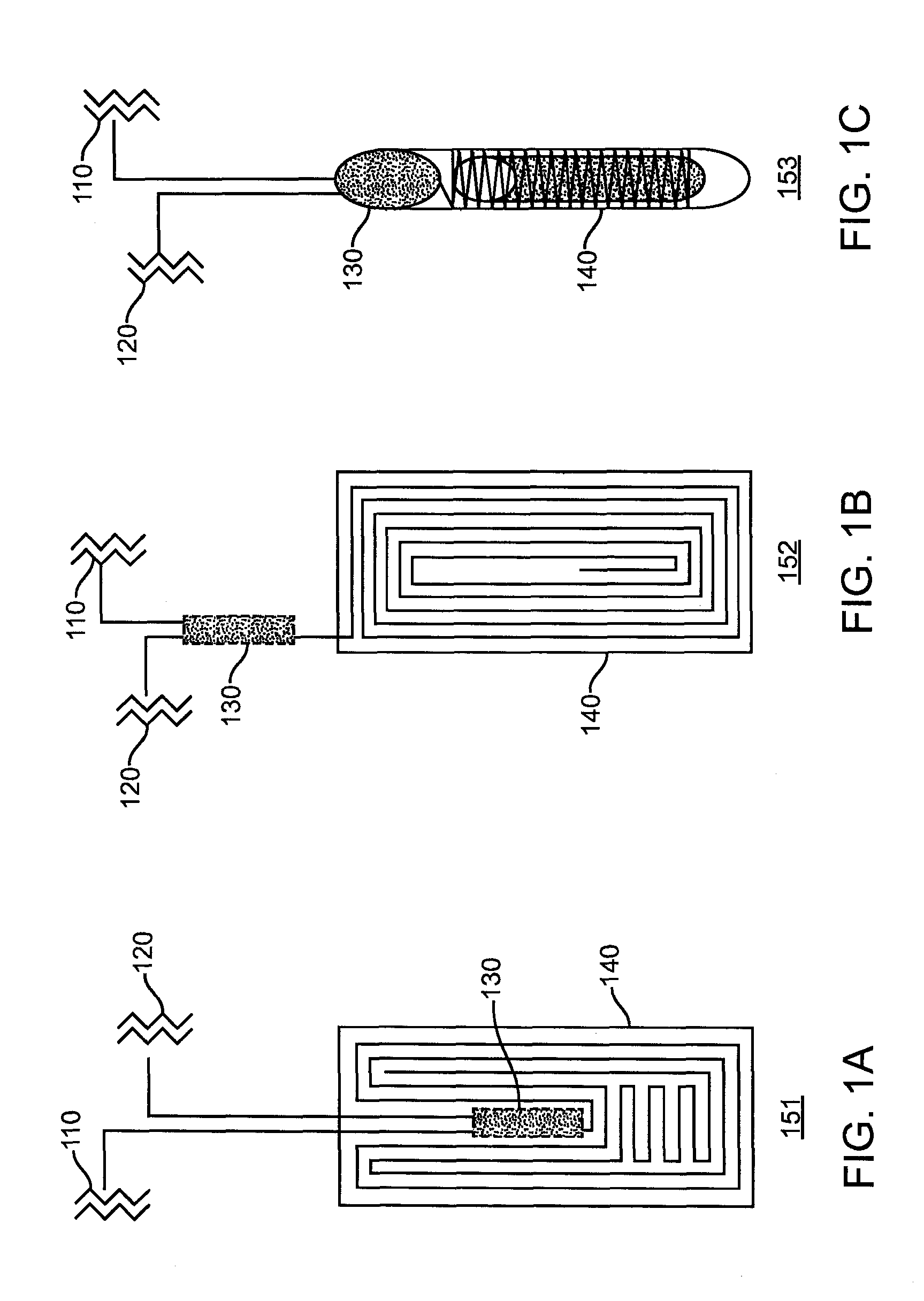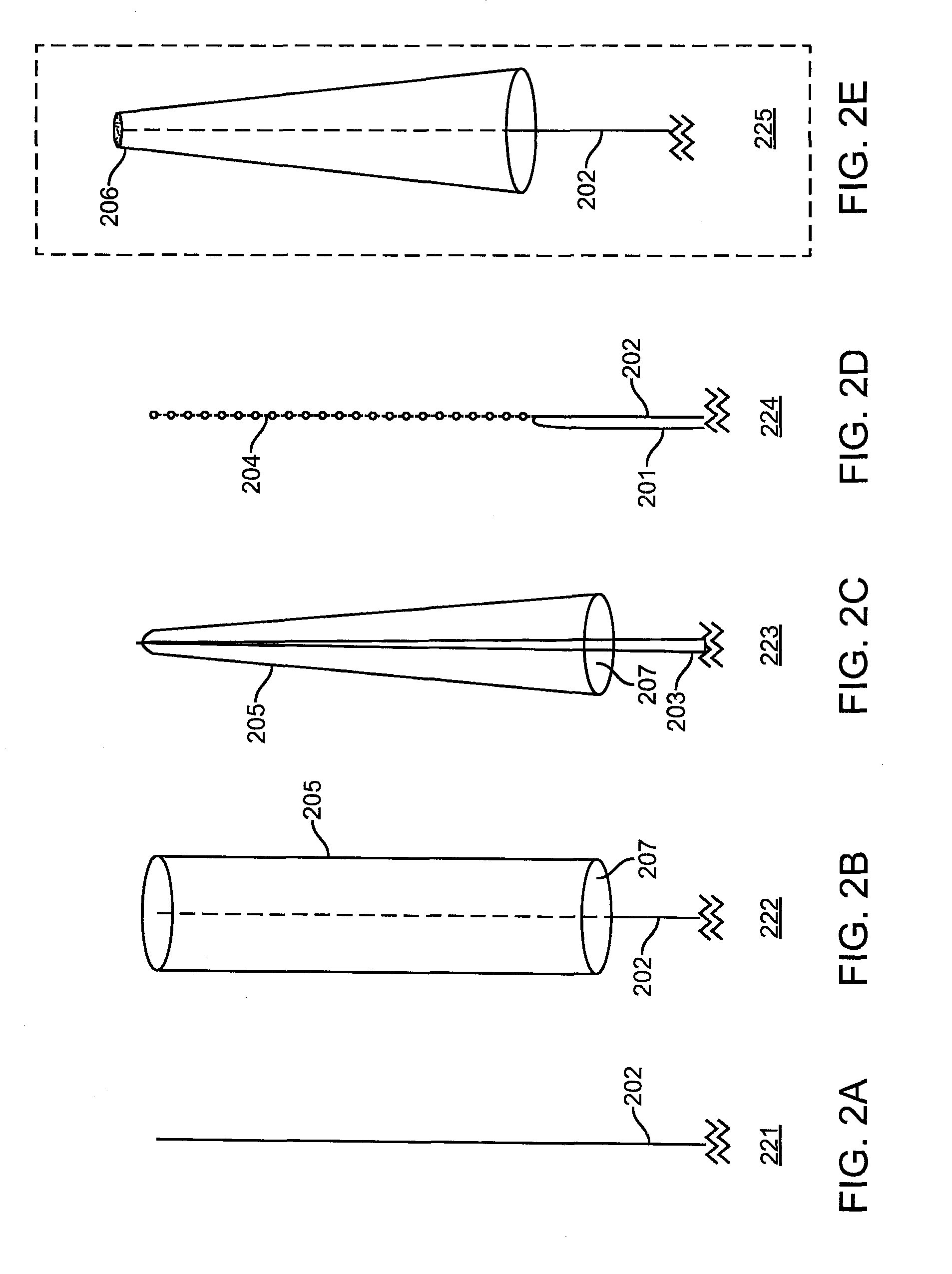Breach detection in solid structures
a solid structure and detection technology, applied in the field of medical devices and methods, can solve the problems of breaching of solid structures, stress and fatigue of manipulation, and the wear and tear area is at the site of manipulation stress and fatigue, and achieve the effect of enhancing sensitivity and reliability of detection and threatening the integrity of the structur
- Summary
- Abstract
- Description
- Claims
- Application Information
AI Technical Summary
Benefits of technology
Problems solved by technology
Method used
Image
Examples
Embodiment Construction
[0053]Referring now to FIGS. 1A-1C, the radiofrequency circuitry of the device is shown in three configurations, each with four major parts, a first conductor 110, a second conductor 120 (a distal end for detection shown in figures below in more detail), a logic circuit 130, and an antenna 140. The logic circuit 130, unless split into distinct parts, for the descriptive purposes here includes the transmitter and transponder. Conductors 110 and 120 are electrically isolated from each other until a breach exposing the conductor 120 to an electrically conductive fluid intruding into said breach bridges them. In circuitry 151, the logic circuit 130 is on the same substrate as the antenna 140. In circuitry 152, the logic circuit 130 is fixed on another substrate apart from the antenna 140 to accommodate design requirements for size and location, esp. to enhance sensitivity, specificity, or robustness. In circuitry 153, the logic circuitry 130 and a ferrite core antenna 140 is fixed insid...
PUM
 Login to View More
Login to View More Abstract
Description
Claims
Application Information
 Login to View More
Login to View More - R&D
- Intellectual Property
- Life Sciences
- Materials
- Tech Scout
- Unparalleled Data Quality
- Higher Quality Content
- 60% Fewer Hallucinations
Browse by: Latest US Patents, China's latest patents, Technical Efficacy Thesaurus, Application Domain, Technology Topic, Popular Technical Reports.
© 2025 PatSnap. All rights reserved.Legal|Privacy policy|Modern Slavery Act Transparency Statement|Sitemap|About US| Contact US: help@patsnap.com



